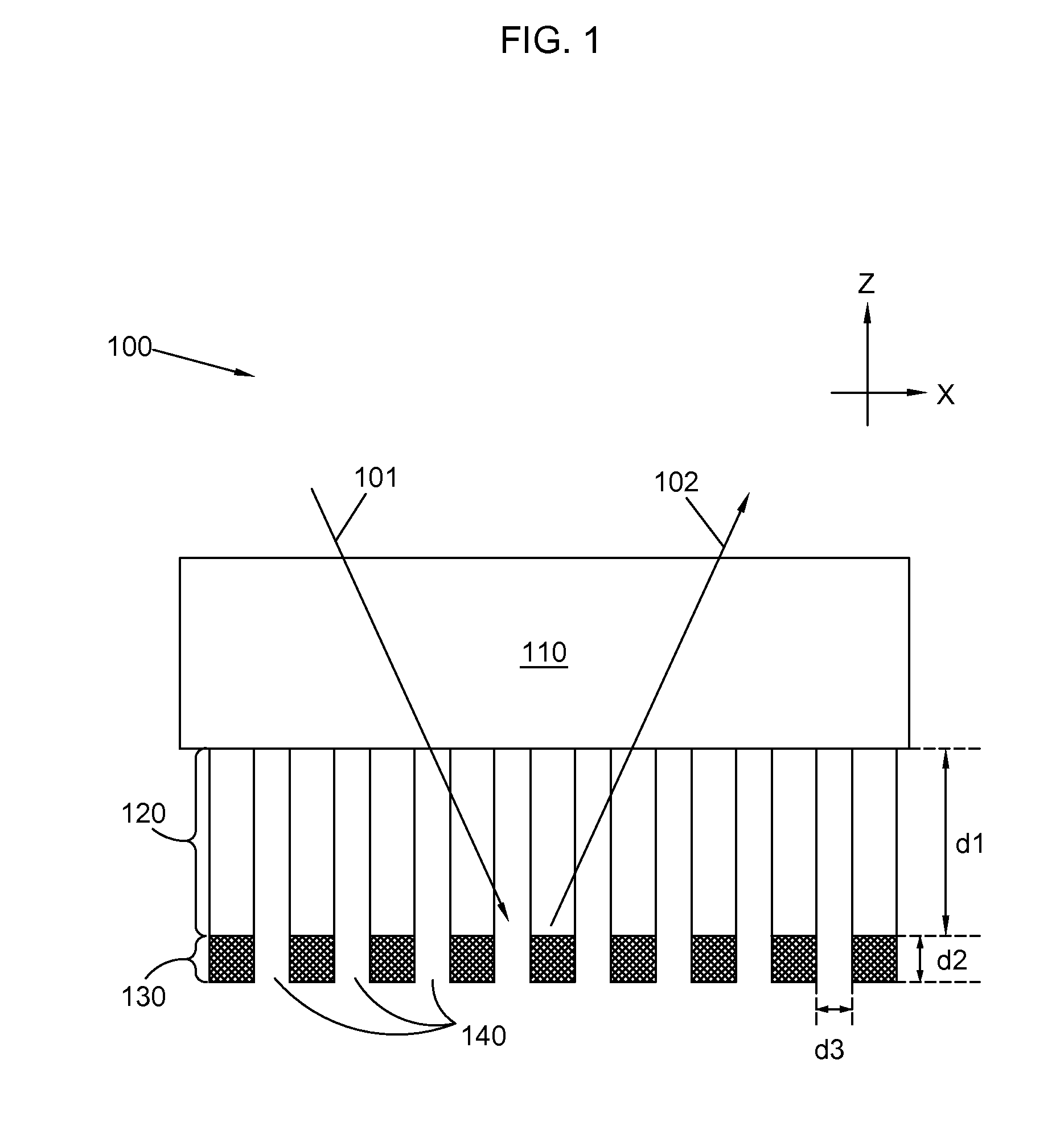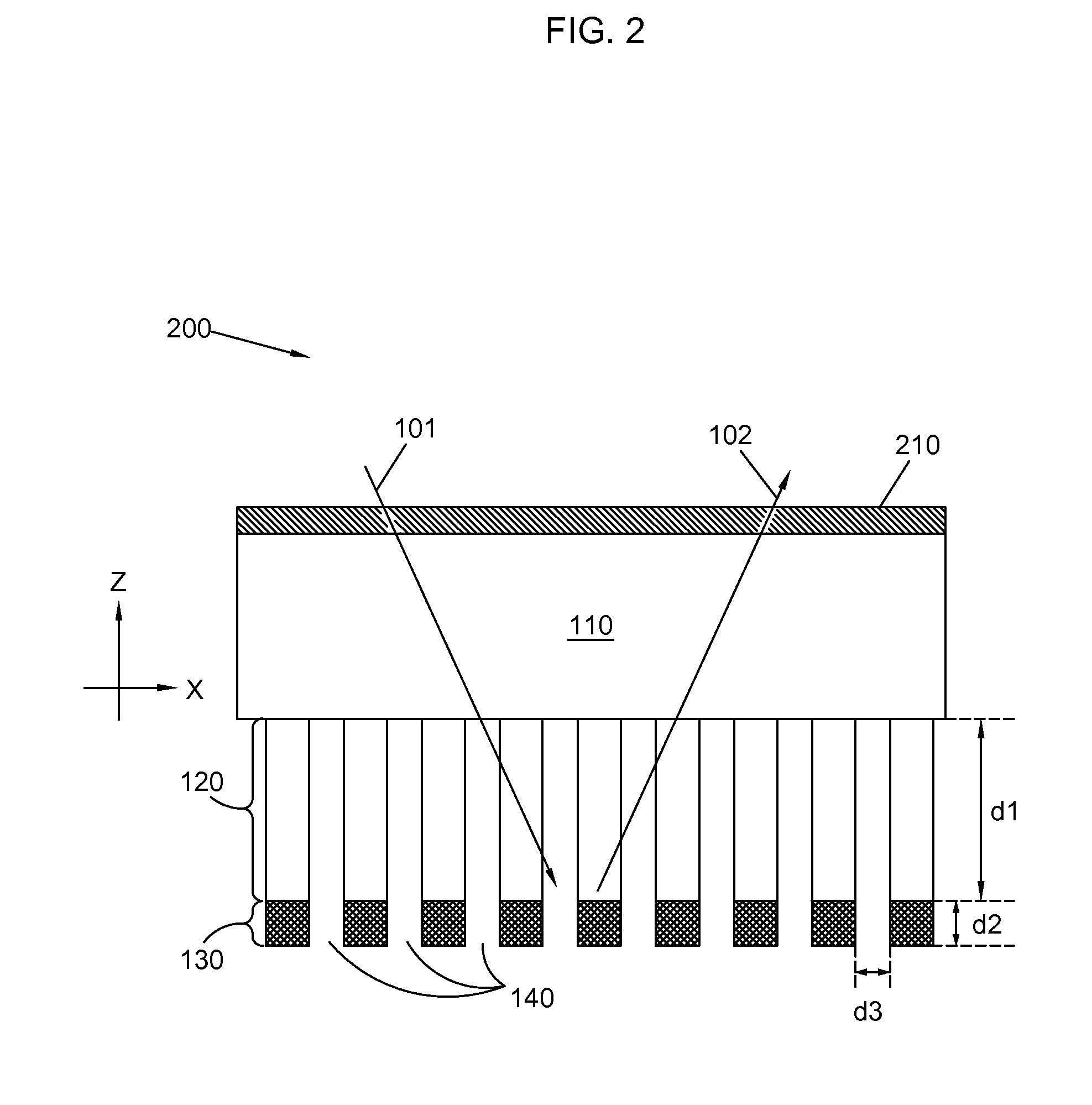Optically Transparent Films for Measuring Optically Thick Fluids
a technology of optically thick fluids and transparent films, applied in the direction of optical radiation measurement, instruments, borehole/well accessories, etc., can solve the problems of inability to detect absorption that is barely detectable for a second analyte, and the state-of-the-art optical measurement techniques are difficult to apply
- Summary
- Abstract
- Description
- Claims
- Application Information
AI Technical Summary
Benefits of technology
Problems solved by technology
Method used
Image
Examples
Embodiment Construction
[0027]Optical absorption measurement techniques include measuring an output signal intensity ‘Iout’ and comparing it to an input signal intensity ‘Iin’. The signal intensity ‘Iout’ may be the intensity of an input signal ‘Iin’ traversing a thickness of a sample, or optical path. The output signal may be measured in transmittance or reflectance mode. According to the Beer-Lambert law of absorption, for a monochromatic light beam having wavelength ‘λ’ and a negligible cross-section, the relation between Iout(λ) and Iin(λ) is given by
Iout(λ)=Iin(λ)·10−A(λ) (1)
[0028]In Eq. (1), the absorbance A(λ) is a property of the material and the optical setup, including an optical path length ‘I(λ)’ (usually in cm), and a concentration ‘C’ of the analyte absorbing radiation at a wavelength, λ. The transmittance, Tλ, of a material is given as the ratio of Iout(λ) / Iin(λ) (cf. Eq(1)). The absorbance A(λ), in Eq. (1) may be written as
A(λ)=ε(λ)·l(λ)·C (2)
where E(λ) is the molar absorptivity (mol−1·cm...
PUM
| Property | Measurement | Unit |
|---|---|---|
| spectroscopic measurements | aaaaa | aaaaa |
| optical densities | aaaaa | aaaaa |
| transparent | aaaaa | aaaaa |
Abstract
Description
Claims
Application Information
 Login to View More
Login to View More - R&D
- Intellectual Property
- Life Sciences
- Materials
- Tech Scout
- Unparalleled Data Quality
- Higher Quality Content
- 60% Fewer Hallucinations
Browse by: Latest US Patents, China's latest patents, Technical Efficacy Thesaurus, Application Domain, Technology Topic, Popular Technical Reports.
© 2025 PatSnap. All rights reserved.Legal|Privacy policy|Modern Slavery Act Transparency Statement|Sitemap|About US| Contact US: help@patsnap.com



